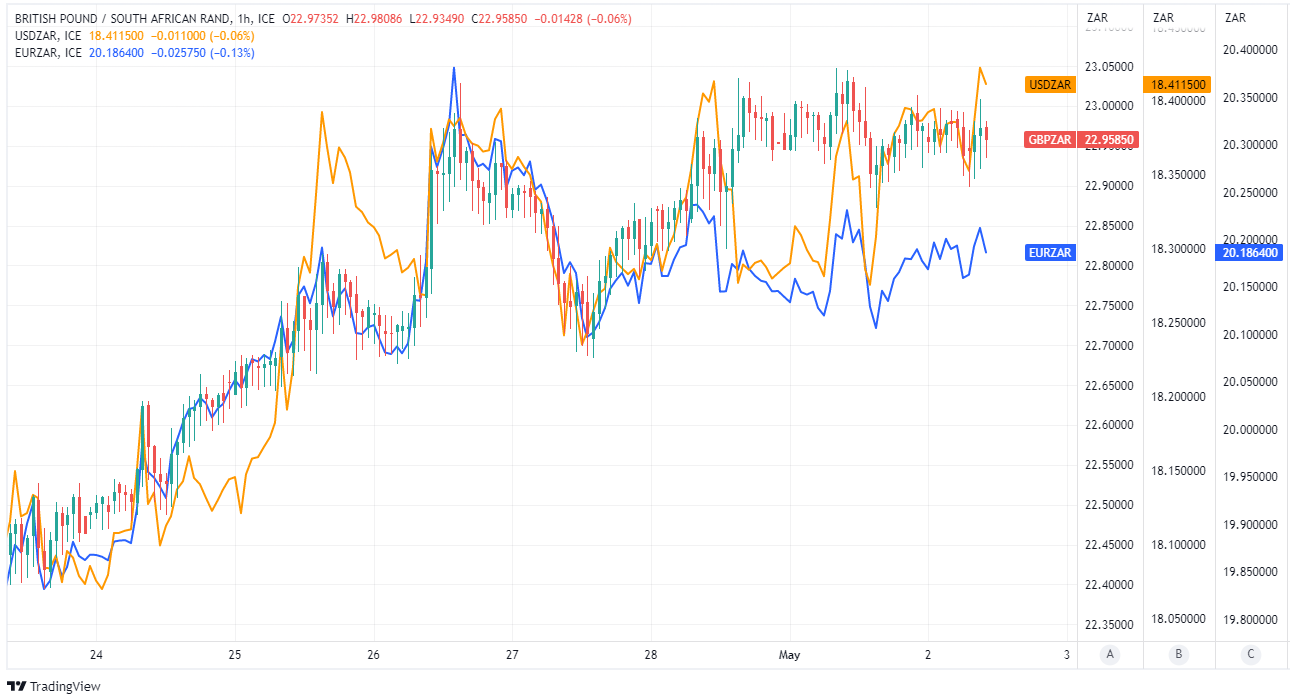Pound to South African Rand Week Ahead Forecast: Topping but Not Dropping
- Written by: James Skinner
-
"In EMEA, we are bullish PLN and ZAR" - BofA Global Research.

© Lefteris Papaulakis, Adobe Images
The Pound to South African Rand exchange rate entered a new and holiday-shortened week near post-pandemic highs but could be likely to oscillate around the 23.0 level in the days ahead with the risk being of a corrective setback if the U.S. Dollar rolls over following Wednesday's Federal Reserve (Fed) decision.
South Africa's Rand edged higher against the Pound, Canadian Dollar and Swiss Franc on Tuesday while also making small gains in relation to the Indian Rupee and Indonesian Rupiah but was otherwise an underperformer in European trade.
Tuesday's early price action echoed earlier events in South African exchange rates, which have underperformed others over the recent week, month and year with the Rand having risen in relation to only the Norwegian Krone when measured against G20 counterparts for 2023.
"The ZAR underperformed after the SARB forecast that the power crisis could add 0.5pp to the inflation rate as businesses pass on the costs of back-up energy solutions to consumers," says Kenneth Broux, a strategist at Societe Generale, in reference to last week's price action.

South African Rand underperformance is rooted in the local energy crisis and its suffocating impact on an already-fragile domestic economy, which has been further constrained this year by an almost constant state of load-shedding at state energy monopoly Eskom.
"Trade data released by SARS indicate that the trade balance deteriorated sharply in the month of March and reverted to a deficit (in seasonally-adjusted terms), after the surplus recorded in February," says Bojosi Morule, a CEEMEA economist at Goldman Sachs.
"On a 3m moving average basis, the trade balance stood at a surplus of ZAR 15bn or around 0.2% of GDP in Q1, essentially unchanged from Q4. Both imports and exports were up slightly in the quarter in nominal Rand terms," Morule says of South African trade data released on Friday.
The energy supply handicap is one prospective reason for why GBP/ZAR might be likely to remain buoyant close to but slightly below the 23.0 handle even if the U.S. Dollar retreats further from its recent highs following Wednesday's Federal Reserve policy decision.
The Fed decision and economic figures emerging from the U.S. are the highlights of the week ahead for Sterling and the Rand in light of sparsely populated domestic economic calendars, and the risk is of these further chipping away at the large gains made by the Dollar last year.
"The rand is likely to remain on the back foot over the course of the week as global risk sentiment remains cautionary," says Walter de Wett, a fixed income and currency strategist at Nedbank.
"Various local factors are weighing on the local unit’s prospects," he adds in a Tuesday market commentary.
Dollars were bought broadly and by the bucket load last year as the Fed began lifting its interest rate in what has quickly become its sharpest monetary tightening cycle for decades but underneath the surface, official data has recently offered signs of the Fed making meaningful progress in its battle with inflation.
Most notably, inflation in the services sector has softened to a level not inconsistent with the 2% target so there may be a risk of the Fed taking a rain cheque on a widely expected increase in interest rates this week.
To the extent that this is the case, there could be further losses ahead for the Dollar and the prospect of gains for other currencies but the outlook for the Rand is less certain in light of ongoing difficulties with the energy supply.
"In EMEA, we are bullish PLN and ZAR," writes Athanasios Vamvakidis, global head of FX strategy at BofA Global Research, in a Friday research briefing.
"For ZAR, favorable valuations, combined with a positive backdrop for EEMEA FX in the medium term, should drive the ZAR stronger," he adds.
